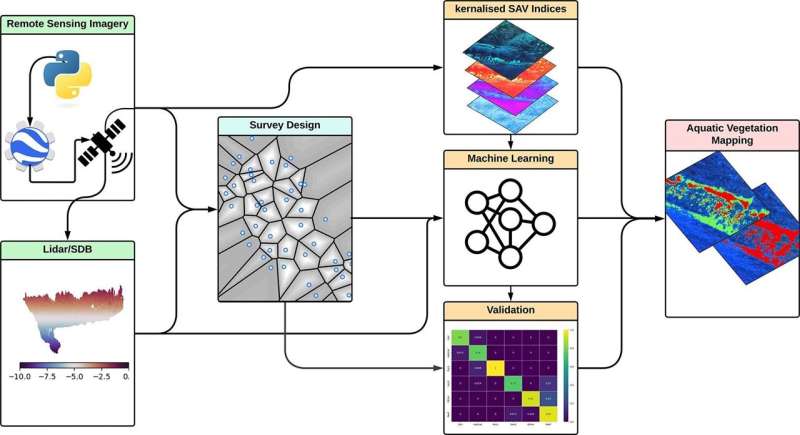This article has been reviewed according to Science X's editorial process and policies. Editors have highlighted the following attributes while ensuring the content's credibility:
fact-checked
trusted source
proofread
New mapping method developed for critical marine habitat

Researchers at The University of Western Australia have led the development of a new technique for accurately mapping shallow and coastal marine habitats.
Dr. Stan Mastrantonis, from UWA's School of Agriculture and Environment, School of Biological Sciences and Oceans Institute, was the lead author of the research published in the ISPRS Journal of Photogrammetry and Remote Sensing.
"In an era where critically important coastal ecosystems are threatened by climate change, there is a fundamental need for efficient, reliable mapping and monitoring of marine vegetation," Dr. Mastrantonis said.
"Traditional remote sensing methods have struggled to track changes in key underwater flora, such as kelp and seagrass.
"These habitats are foundational to marine ecosystems and vital for the survival and health of commercial fishery species, such as the Western Rock Lobster."
The study, which included researchers from UWA, the Australian Institute of Marine Science, and the Department of Primary Industries and Regional Development, spanned a 400km stretch of the Mid-West coastline of Western Australia.
Co-author Dr. Ben Radford from AIMS said the project explored the limits of satellite remote sensing in the marine and coastal environment.
"By integrating onsite data with information gathered through underwater imagery and satellite remote sensing, we formulated a novel remote sensing vegetation index," Dr. Radford said.
Dr. Mastrantonis said the index could be applied across diverse sites, depths, and habitat types.
"It reliably maximizes the spectral differences between aquatic vegetation and other types of habitats, making it easier to discriminate compared to other methods," he said.
The mapping method was found to be especially effective in regions dominated by coastal macroalgae, essential for marine life and supporting recreational and commercial fishing activities.
"With seagrass and kelp beds facing alarming rates of decline due to climate-induced change, the urgency for innovative approaches like this has never been greater," Dr. Mastrantonis said.
"The method offers a scalable solution for large-scale marine vegetation monitoring and could serve as a universal metric for mapping marine habitats."
More information: Stanley Mastrantonis et al, A novel method for robust marine habitat mapping using a kernelised aquatic vegetation index, ISPRS Journal of Photogrammetry and Remote Sensing (2024). DOI: 10.1016/j.isprsjprs.2024.02.015
Provided by University of Western Australia



















